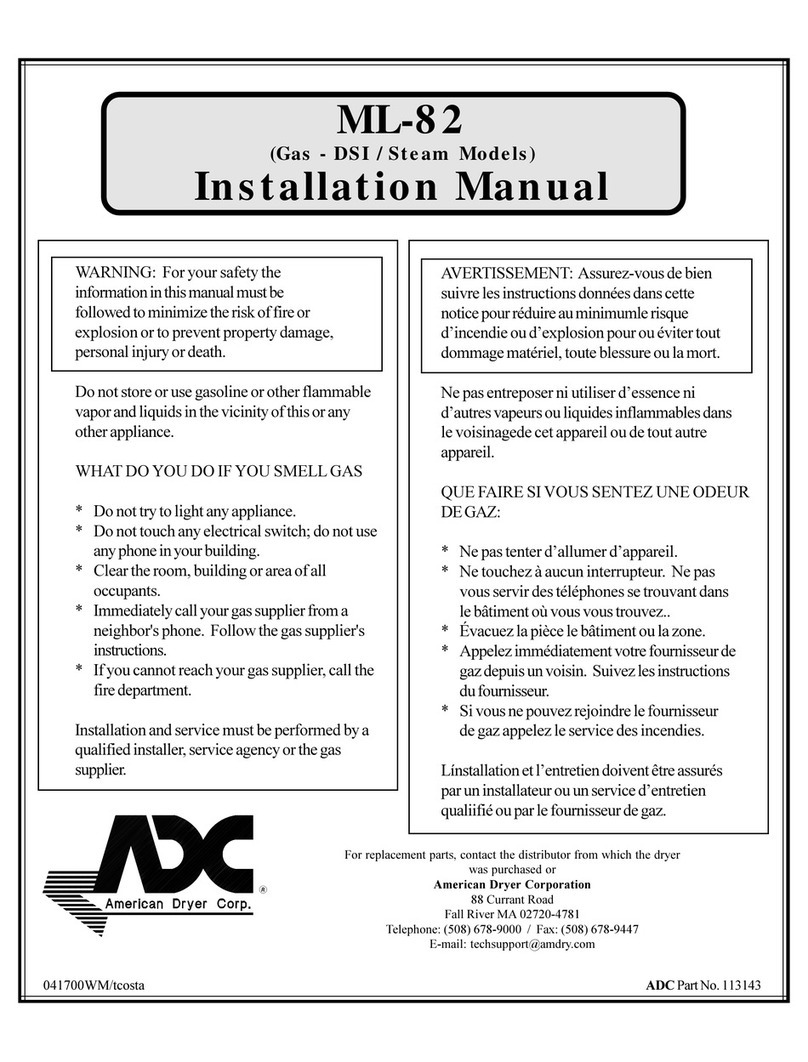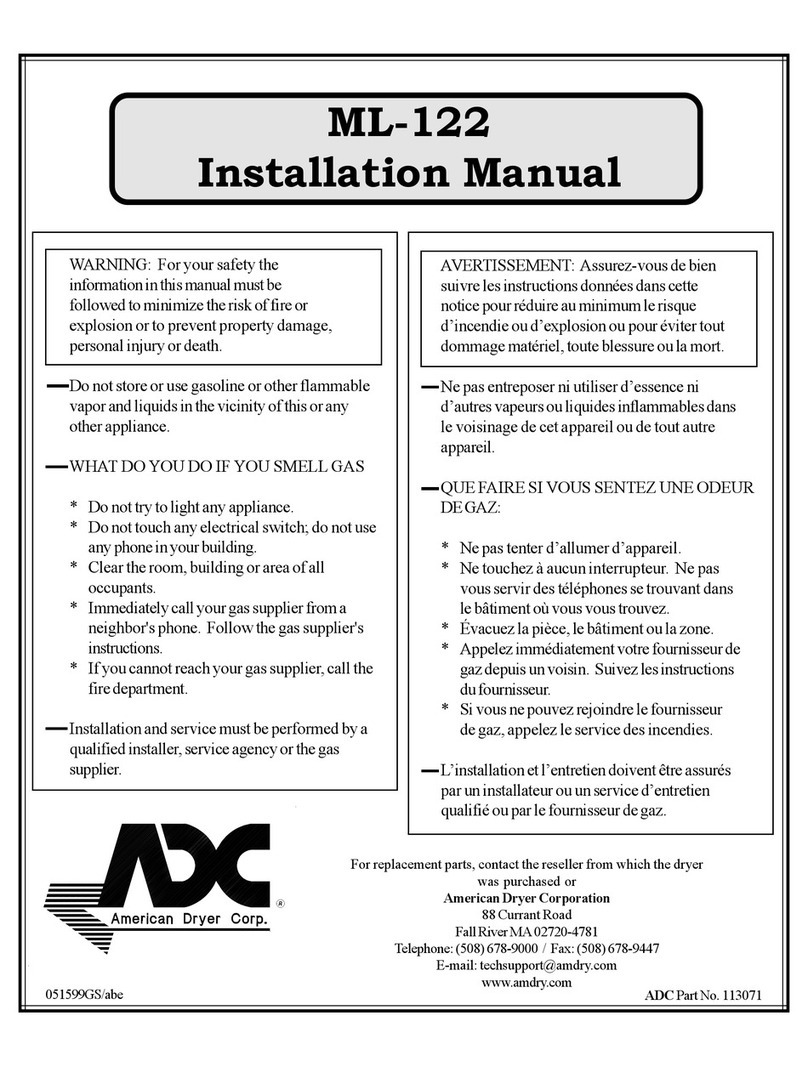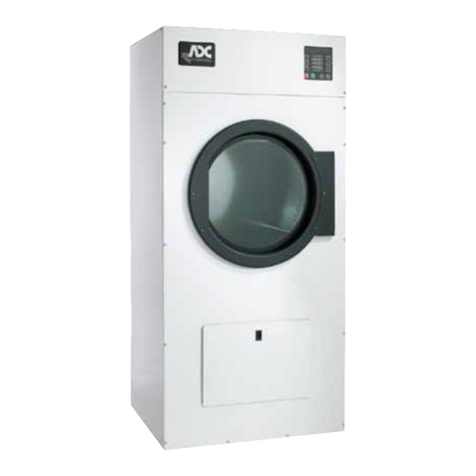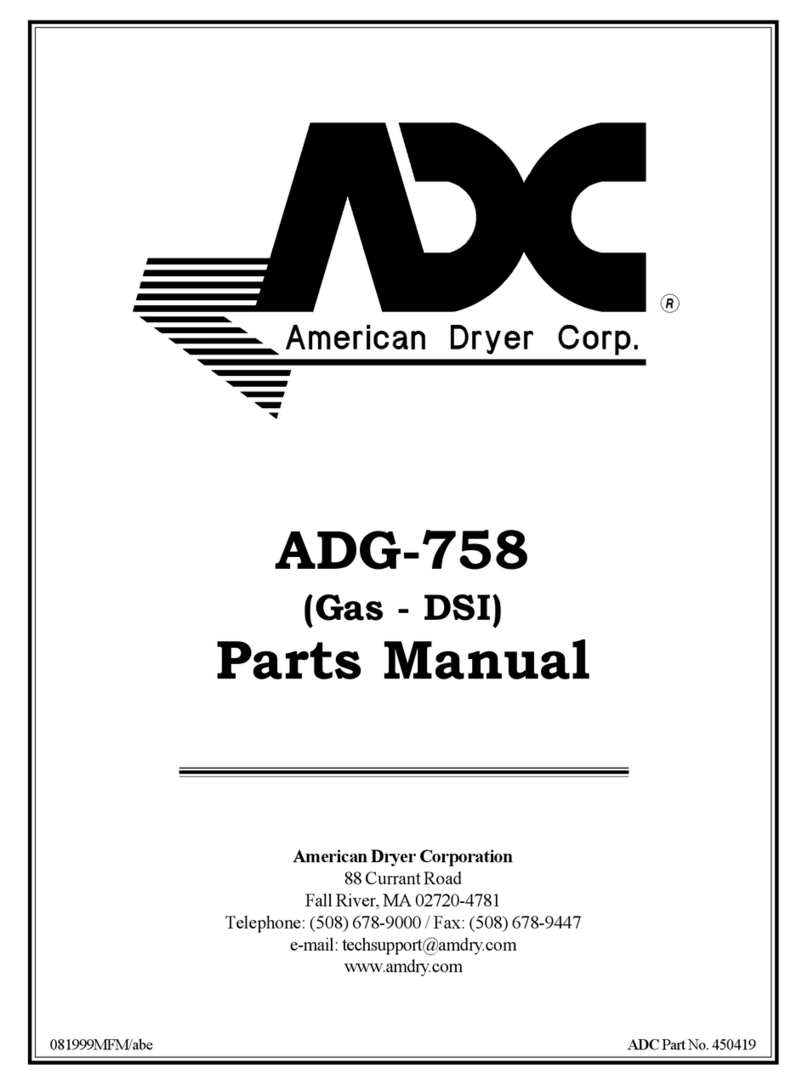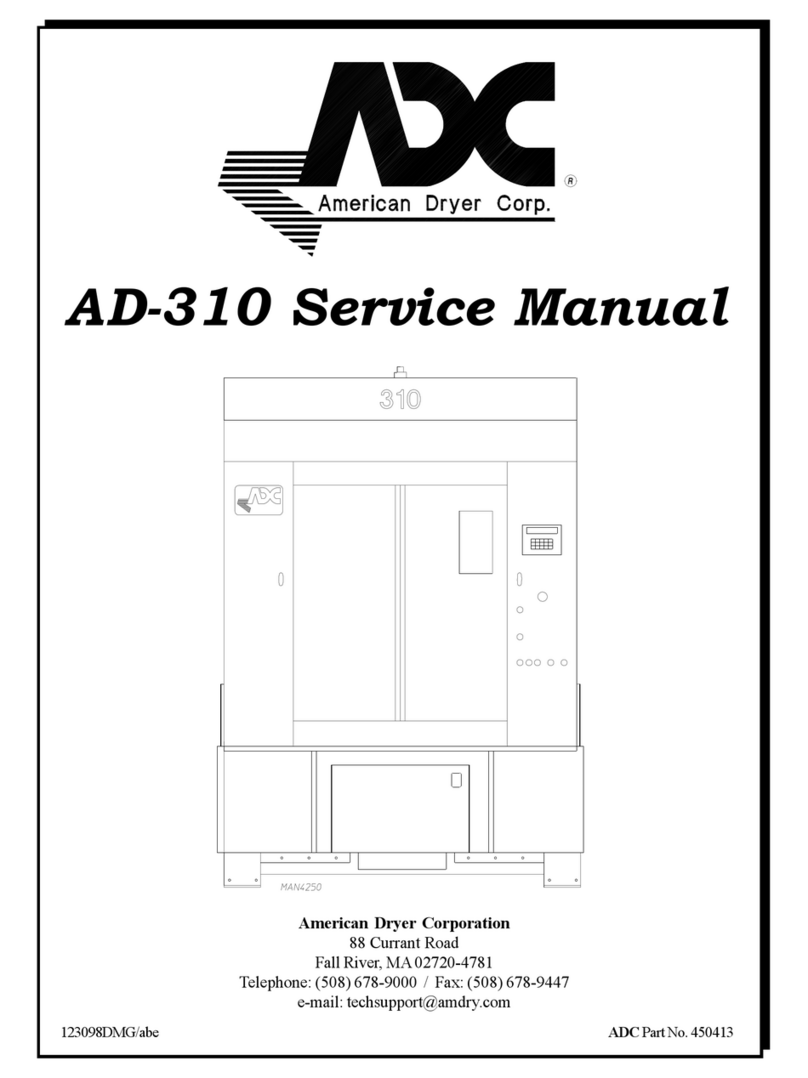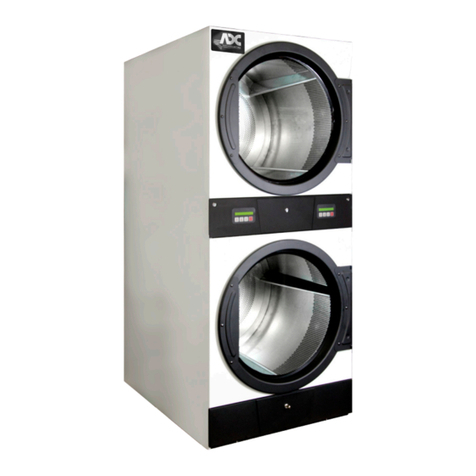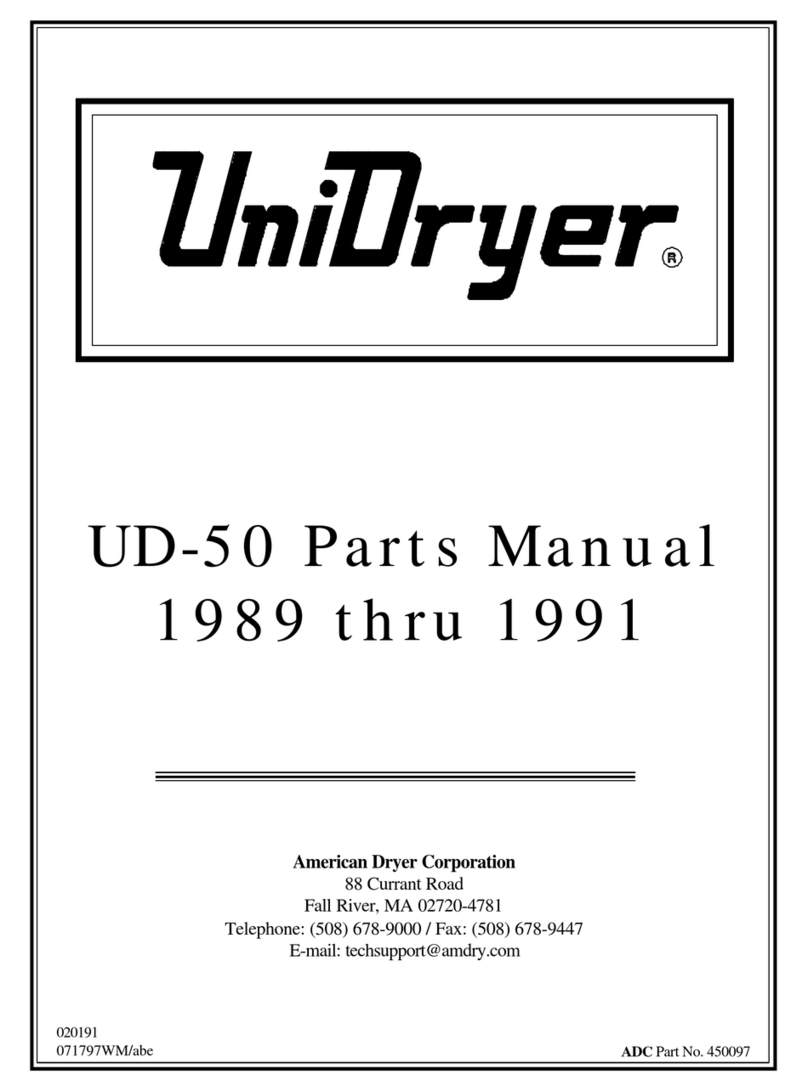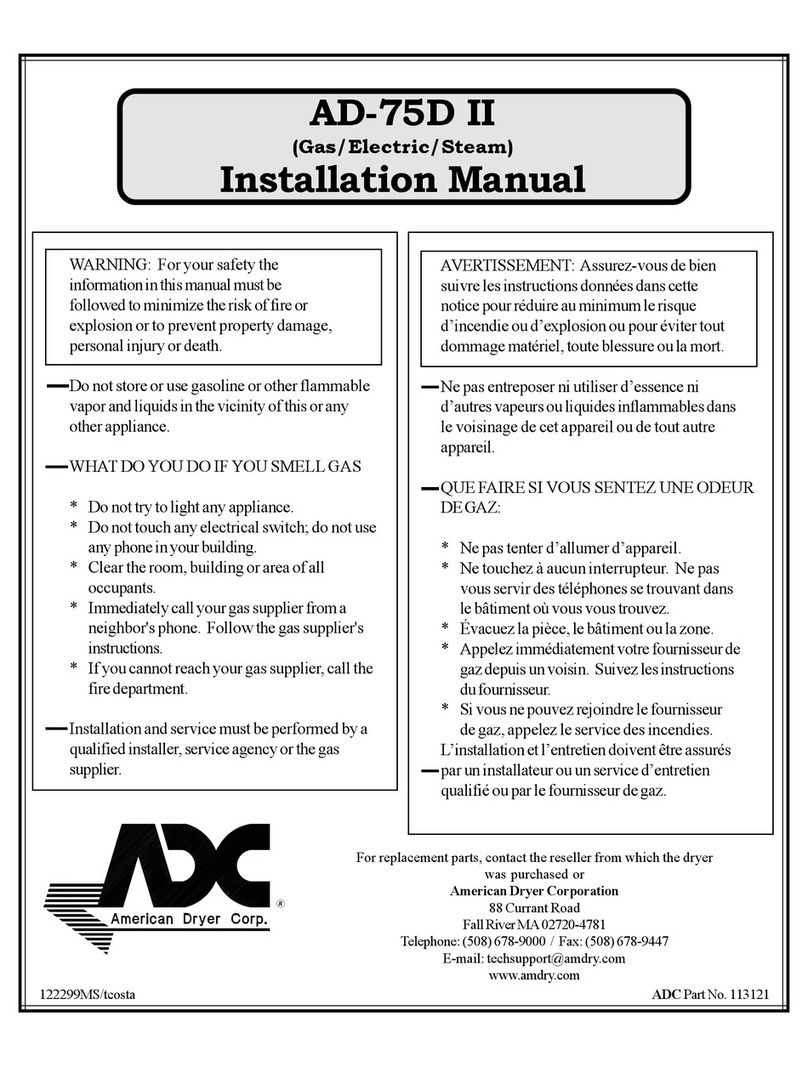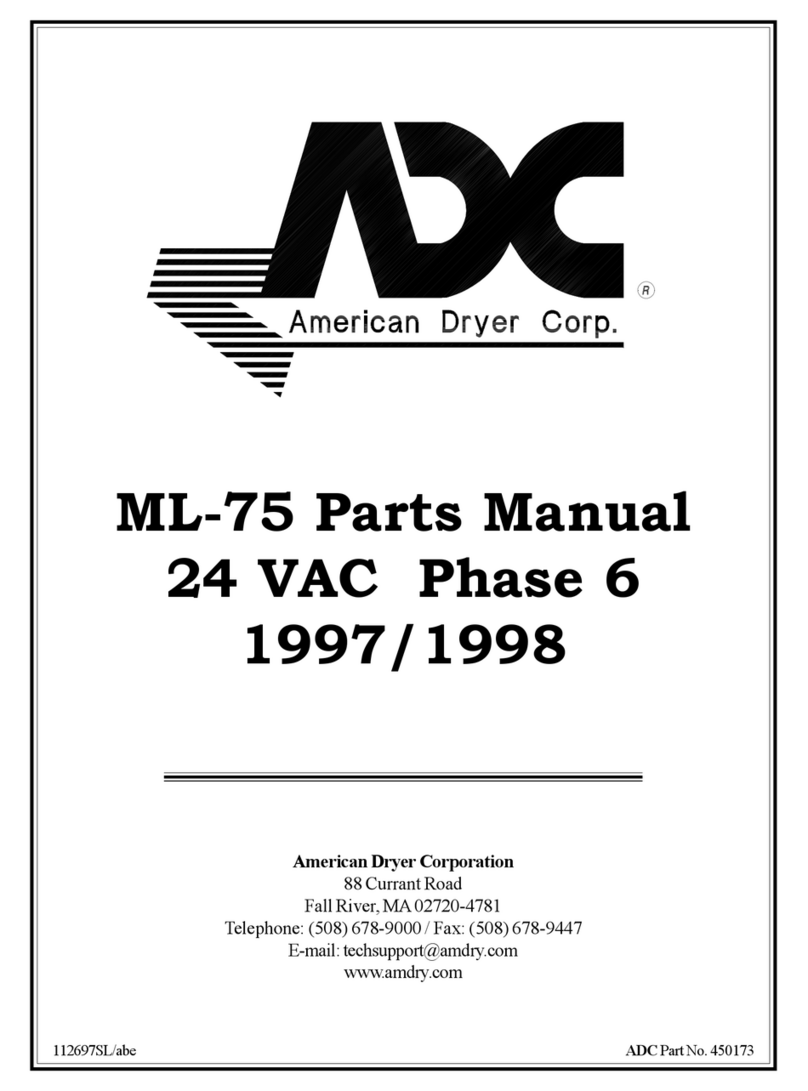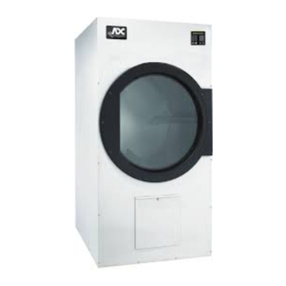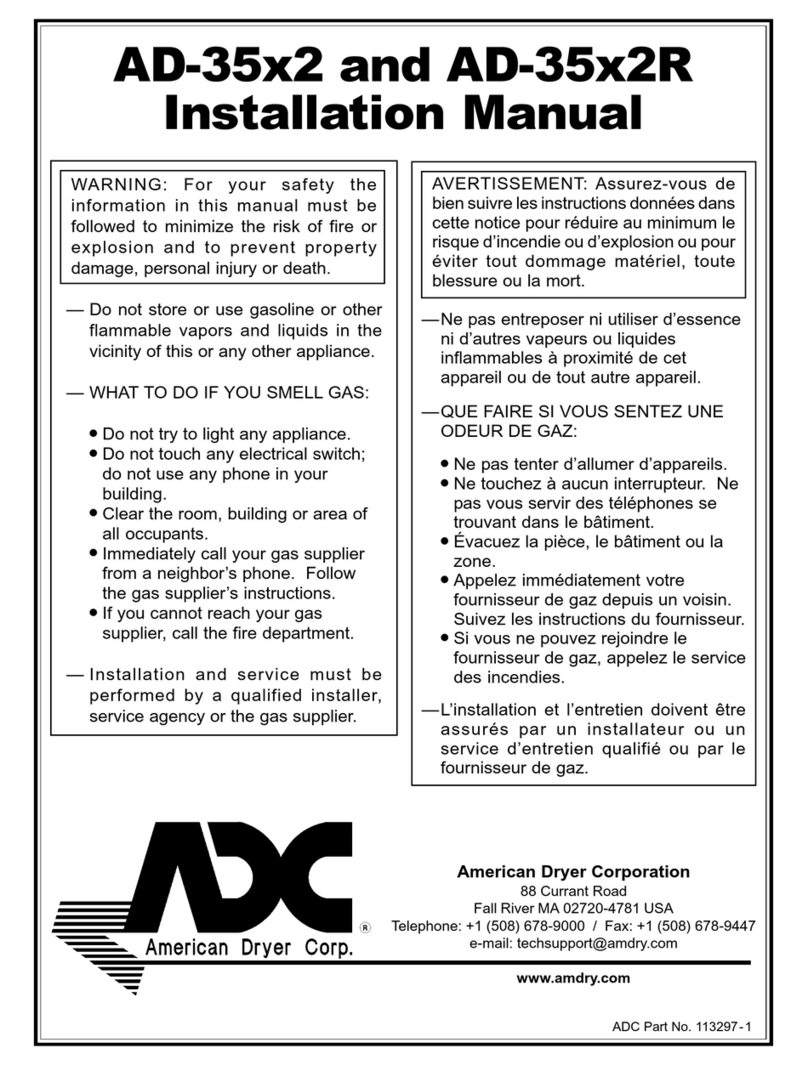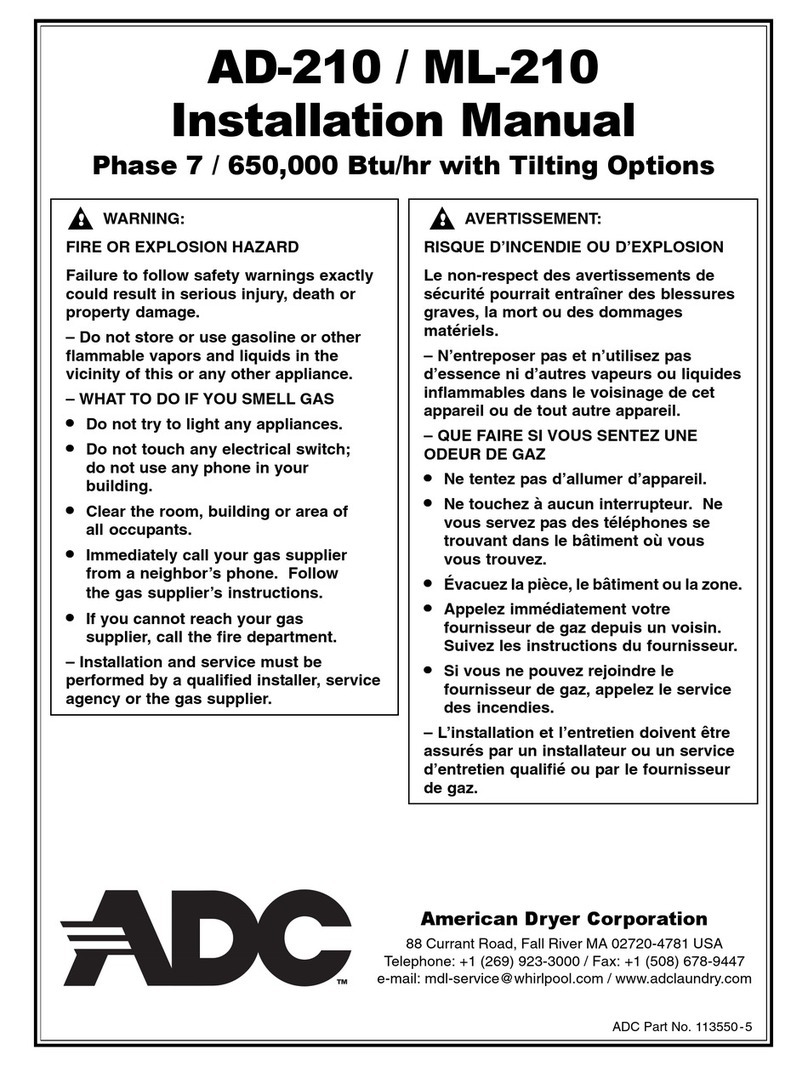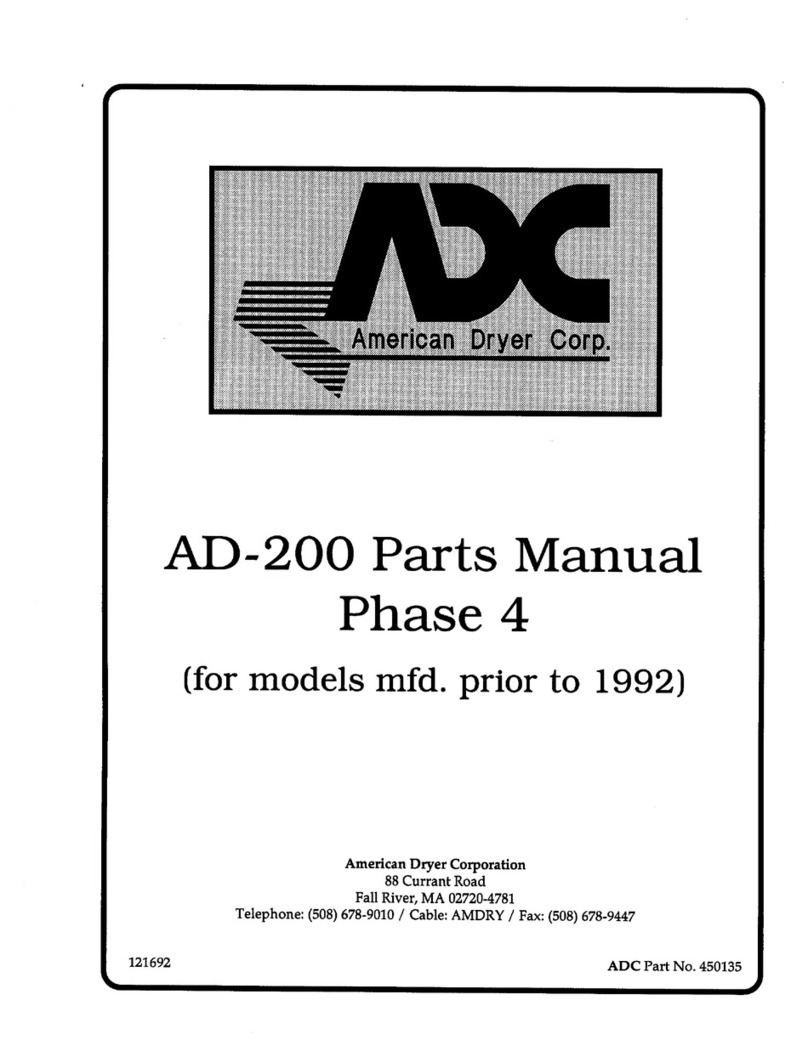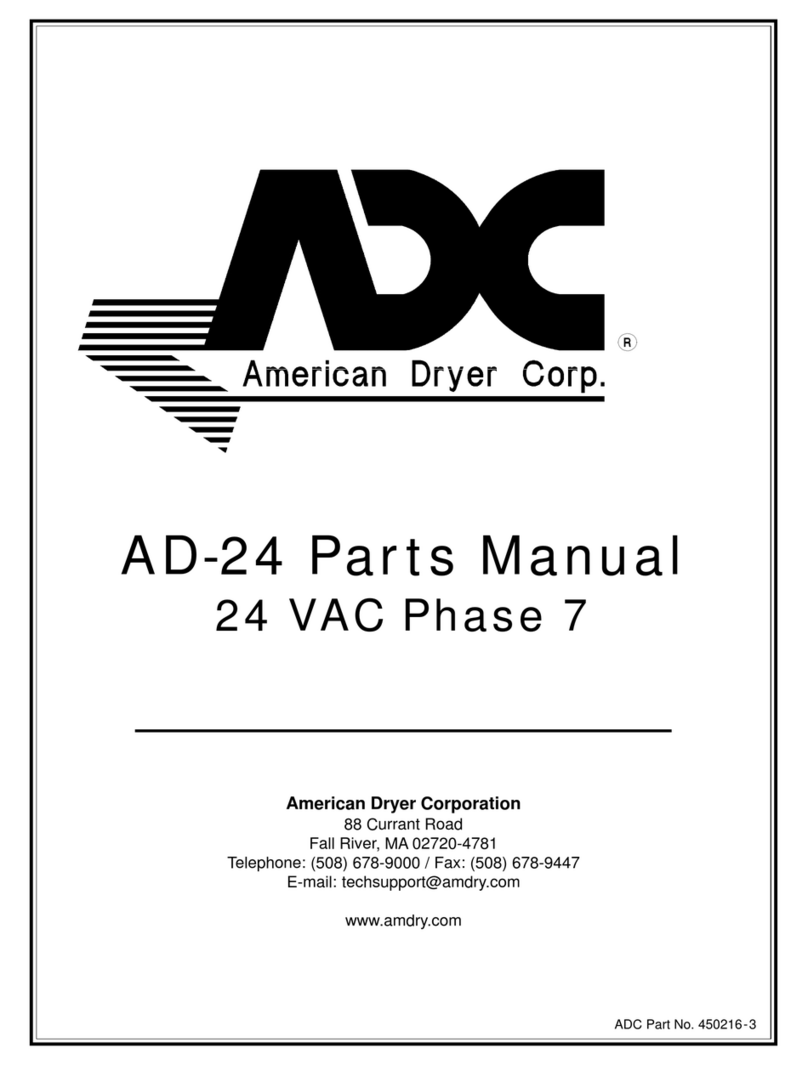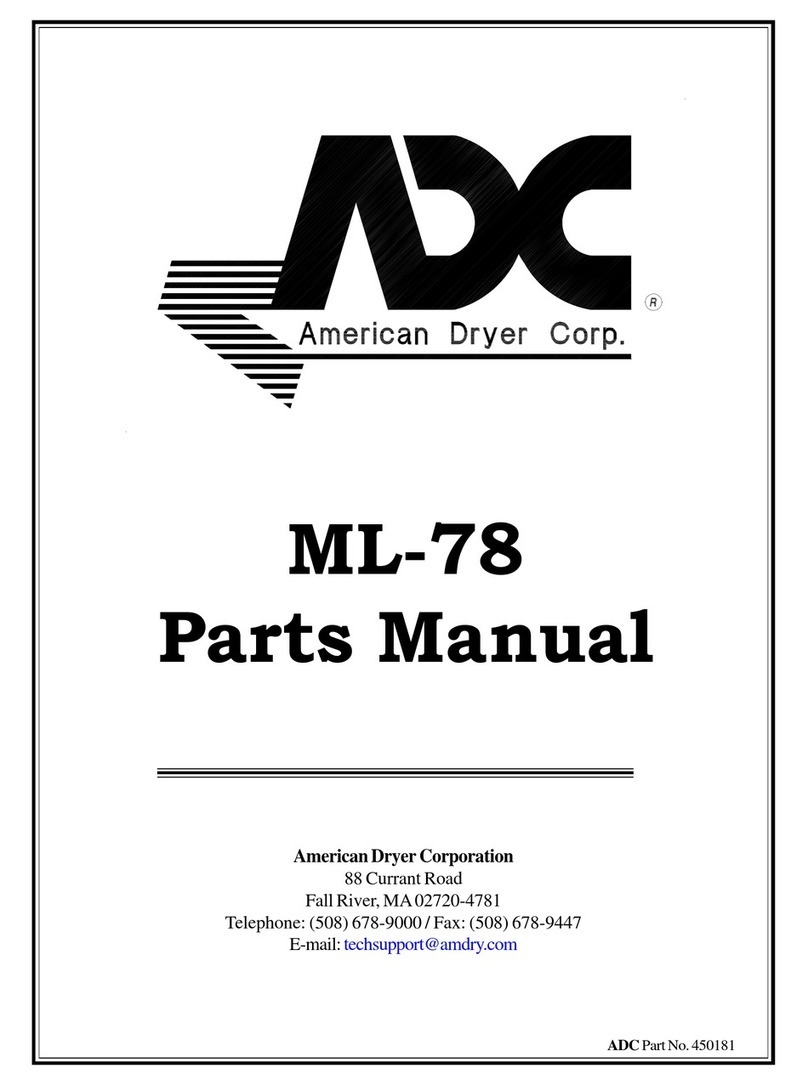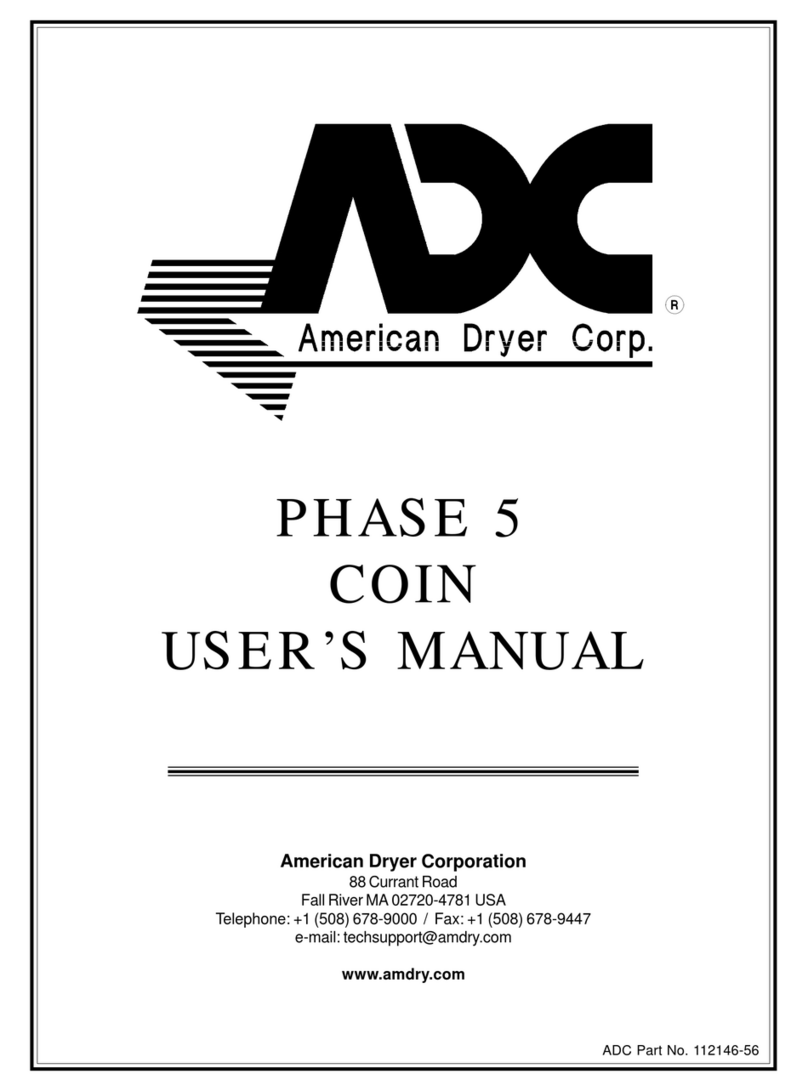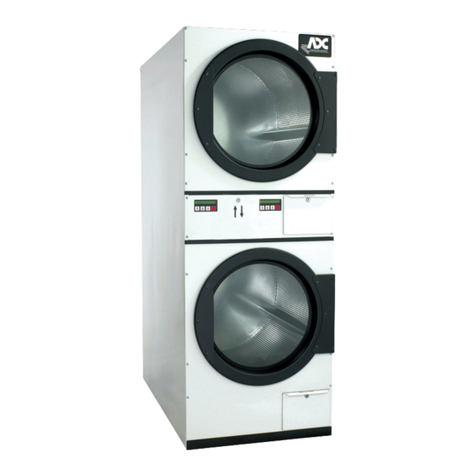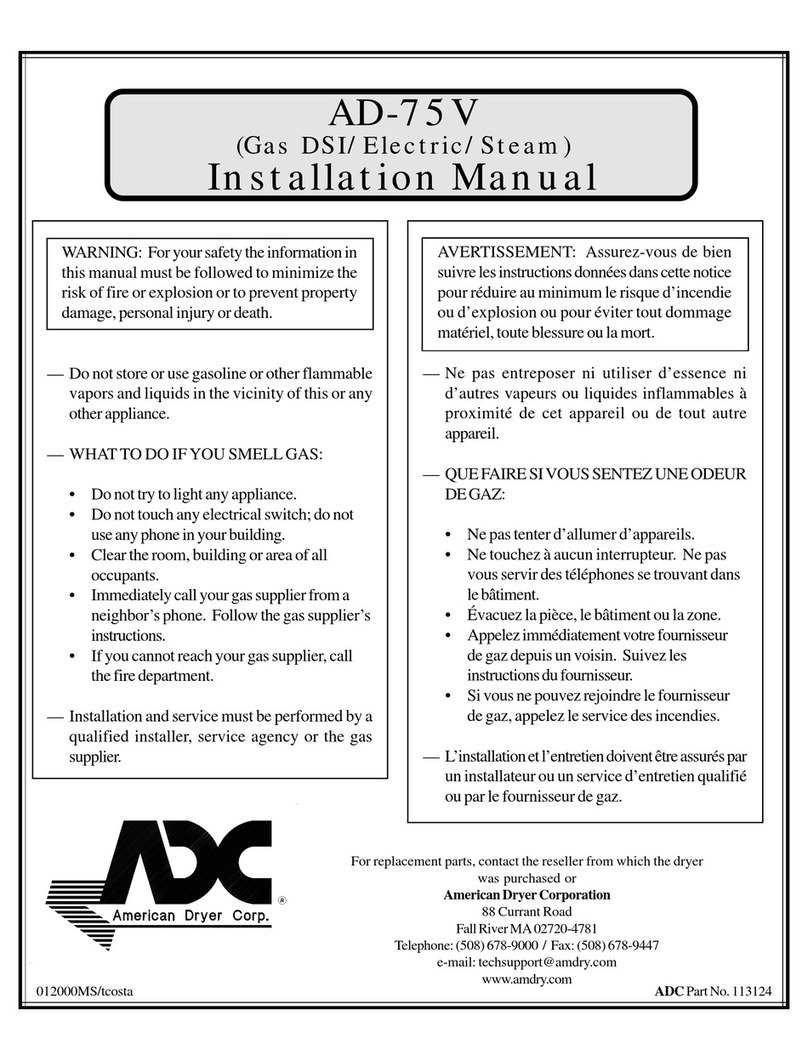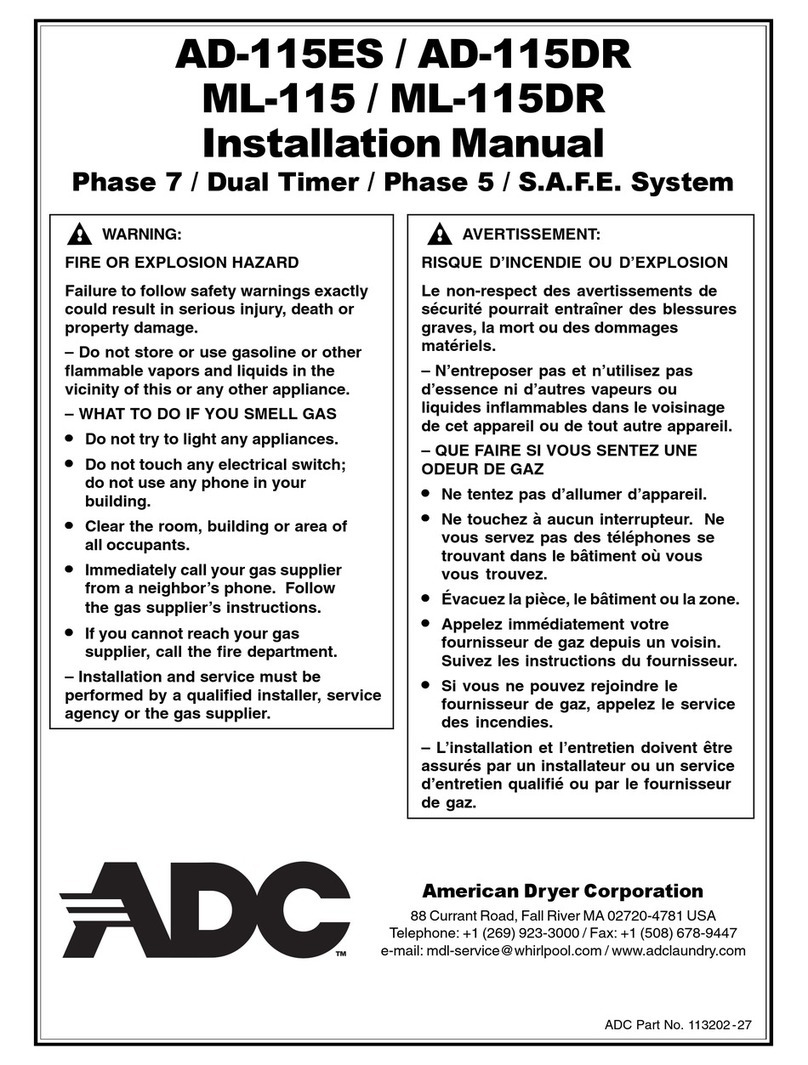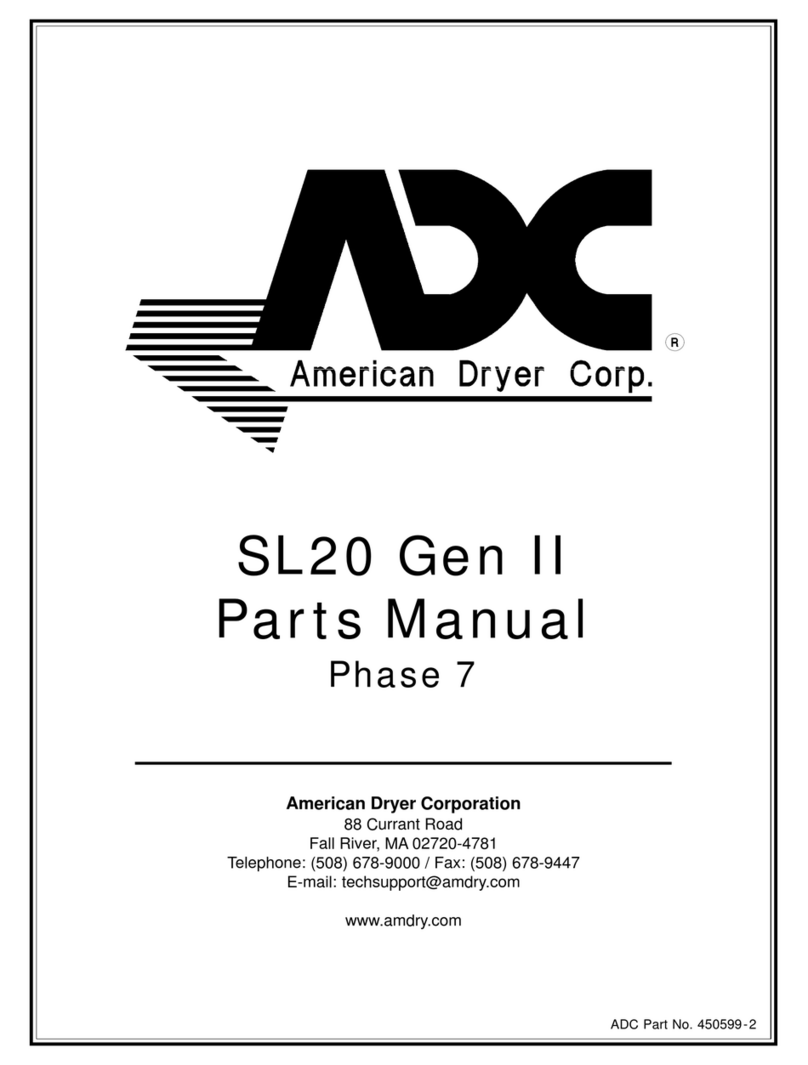
6
Shaded areas are stated in metric equivalents 5/26/06
IMPORTANT: Gas dryers and steam dryers must be provided with a clean, dry, and regulated 80 psi
± 10 psi (5.51 bar ± 0.68 bar) air supply.
NOTE: ADC reserves the right to make changes in specifications at any time without notice or
obligation.
MAXIMUM CAPACITY (DRY WEIGHT) 170 lb 77.11 kg
TUMBLER DIAMETER 51-1/2” 130.81 cm
TUMBLER DEPTH 42-1/2” 107.95 cm
TUMBLER VOLUME 51.20 cu ft 1,449.82 L
TUMBLER/DRIVE MOTOR 1 hp 0.75 kW
BLOWER/FAN MOTOR 7-1/2 hp 5.59 kW
DOOR OPENING (DIAMETER) 31-3 /8 ” 79.69 cm
DOOR SILL HEIGHT 33-3/8” 84.77 cm
WATER CONNECTION 3/4”-11.5 NH
(North America)
3/4” B.S.P.T.
(Outside North America)
DRYERS PER 20’/40’ CONTAINER 3 / 7
DRYERS PER 48’/53’ TRUCK 8 / 9
VOLTAGE AVAILABLE 208-575V 3ø 3,4w 50/60 Hz
APPROXIMATE NET WEIGHT 2,103 lb 953.90 kg
APPROXIMATE SHIPPING WEIGHT 2,269 lb 1,029.20 kg
AIRFLOW 60 Hz 3,700 cfm 104.77 cmm
50 Hz 3,083 cfm 87.30 cmm
HEAT INPUT 550,000 Btu/hr 138,598 kcal/hr
EXHA UST C ONNECTION (DIAMETER) 1 8 ” 45.72 cm
COMPRESSED AIR CONNECTION 1/4” Quick Connection
COMPRESSED AIR VOLUME 4.25 cfh 0.12 cmh
INLET PIPE CONNECTION 1-1/2” F.N.P.T.
1-1/2” B.S.P.T.
(CE and Australia Only)
VOLTAGE AVAILABLE 416-460V 3ø 3,4w 50/60 Hz
APPROXIMATE NET WEIGHT 2,103 lb 953.90 kg
APPROXIMATE SHIPPING WEIGHT 2,269 lb 1,029.20 kg
AIRFLOW 60 Hz 3,700 cfm 104.77 cmm
50 Hz 3,083 cfm 87.30 cmm
EXHA UST C ONNECTION (DIAMETER) 1 8 ” 45.72 cm
COMPRESSED AIR CONNECTION 1/4” Quick Connection
COMPRESSED AIR VOLUME 4.25 cfh 0.12 cmh
OVEN SIZE
kW Btu/hr kcal/hr
126 429,900 108,300
VOLTAGE AVAILABLE 208-575V 3ø 3,4w 50/60 Hz
APPROXIMATE NET WEIGHT 2,259 lb 1,024.67 kg
APPROXIMATE SHIPPING WEIGHT 2,425 lb 1,099.96 kg
AIRFLOW 60 Hz 4,400 cfm 124.59 cmm
50 Hz 3,666 cfm 103.80 cmm
STEAM CONS UMPTION 7 2 5 l b /hr 328.85 kg/hr
OPERATING STEAM PRESSURE 125 psi max 8.62 bar
EXHA UST C ONNECTION (DIAMETER) 2 0 ” 50.80 cm
COMPRESSED AIR CONNECTION 1/4” Quick Connection
COMPRESSED AIR VOLUME 4.25 cfh 0.12 cmh
BOILER HORSEPOWER (NORMAL LOAD) 19 Bhp
SUPPLY CONNECTION 1-1/2” F.N.P.T.
RE TURN CONNEC TION 1 - 1 /2 ” F. N. P.T.
SECTION II
SPECIFICATIONS/COMPONENT IDENTIFICATION
A. SPECIFICATIONS
Gas
Electric
Steam






